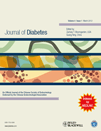Did AIM-HIGH aim too low?
There is intriguing evidence that niacin, in combination with a statin, reduces atherosclerosis in association with reductions in triglyceride and low-density lipoprotein–cholesterol (LDL-C), and with increases in high-density lipoprotein–cholesterol (HDL-C).1 The AIM-HIGH (Atherothrombosis Intervention in Metabolic Syndrome with Low HDL/High Triglycerides: Impact on Global Health) trial investigated the effect of niacin on outcome in 3414 people with established, stable cardiovascular disease (CVD) consisting of either atherosclerotic coronary, cerebral, or peripheral arterial disease, one-third of whom had diabetes. The trial was stopped after three of its planned 4.6 years, reporting no benefit.2 What happened? Were the investigators correct in calling for early termination? Most importantly, what can we learn from AIM-HIGH about potential studies of cardiovascular outcome in people with diabetes?
The decision by the study’s data monitoring and safety board (DMSB) to terminate the study early was explained as follows:
The rate of clinical events was the same in both treatment groups, and there was no evidence that this would change by continuing the trial…(and) a small and unexplained increase in ischemic stroke rates in the high dose, extended-release niacin group…contributed to the (National Heart, Lung, and Blood Institute) acting director’s decision to stop. (see http://www.aimhigh-heart.com, accessed 25 November 2011).
In retrospect, unfortunately, it was learned that the supposed increase in stroke supporting the DMSB’s decision did not occur: 28 vs 12 strokes occurred as first study events in the niacin versus control groups, respectively, but some occurred between 2 months and 4 years after discontinuation of niacin treatment, and strokes that were not “first study events” were not counted. “When we look just at strokes that occurred when the patients were actually on treatment, we have 21 on niacin versus 18 on placebo,” said William Boden, an AIM-HIGH investigator and member of its Writing Group (http://www.theheart.org/article/1311689.do, accessed 25 November 2011).
What of the first argument, that continuing the trial would have been futile? The study was powered to observe a 25% event reduction.3 Three years may well have been insufficient to observe an effect. Some statin trials showed separation between intervention and control groups only after 3 years4–6 and a drug added to statin therapy could well require an even longer time. It may not be credible that continuing the trial could not have led to significant results.
Why was the separation in lipid levels so modest? During the 3-year period of observation, LDL-C and HDL-C levels were 4 mg/dL lower and 4 mg/dL higher, respectively, in the niacin group compared with the control group. These differences are considerably less than the approximately 20% changes seen in other studies of niacin.7 In addition, there were adherence issues, with 25%, 6%, and 10% of patients discontinuing, requiring dosage reduction, and having <75% adherence to niacin, respectively. Furthermore, 13% of participants in the niacin group received a 20 mg daily dose of simvastatin, as opposed to 8% of the control group, whereas 18% vs 25% received a daily dose of 80 mg. The niacin participants received an average daily simvastatin dose of 43 mg, whereas the control group received an average daily dose of 49 mg. In addition, 10% of participants in the niacin group, but 22% of the control group, received ezetimibe. Thus, nearly one-quarter of the control patients received additional lipid-lowering treatment, whereas more than one-third of the niacin group was incompletely adherent to the intervention.2
We must accept a disappointing outcome of AIM-HIGH, but we must not accept an incorrect one. Did “pseudo safety” concerns affect the scientific judgment of the researchers and DMSB of the study? Did the researchers and DMSB fear criticism that would have been unfounded and, in that context, overreact to the misleading stroke information? Indeed, recognizing the adherence issue and the imbalance in additional treatment favoring the control group, one may wonder whether the study was designed in such a fashion that a potential benefit of niacin could not be observed.
The burden of CVD among people with diabetes is immense, but glycemic control, differing from lipid treatment, appears particularly beneficial in reducing adverse outcome when started early in the course of the disease. With such a perspective, studies of CVD prevention among people with diabetes must accept long periods of treatment to show benefit, recognizing that existing studies of glycemic control have suggested that there may be reduction in CVD but that, in association with increasing rates of hypoglycemia, adverse outcomes may also occur.
In health care, patients and physicians alike require sound recommendations, reliable guidance, and solid answers. The answers in CVD prevention are still lacking. We call upon researchers to return to “scientific sanity” and to adhere to research principles to allow the completion of studies as planned, to allow us the needed results. Appropriate prevention studies will require careful design, realistic projection of the circumstances and duration of intervention required for benefit to occur, and discipline to maintain the interventions for the periods required. The potential for benefit is immense, but we must truly “aim high” to reach such a goal.




